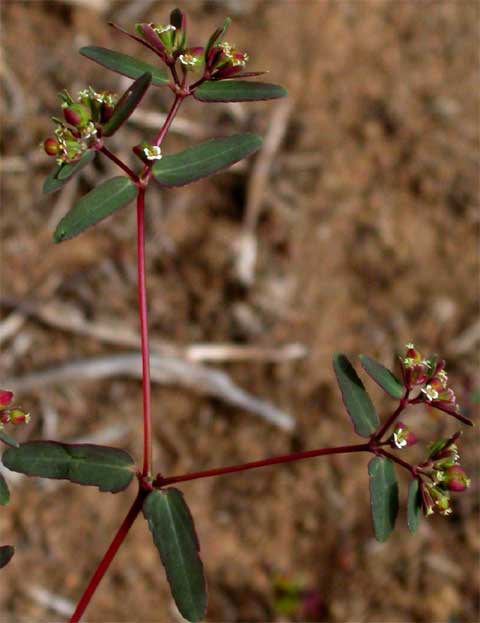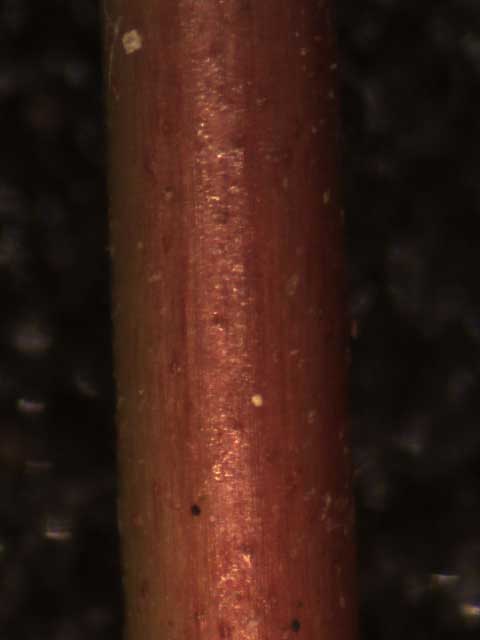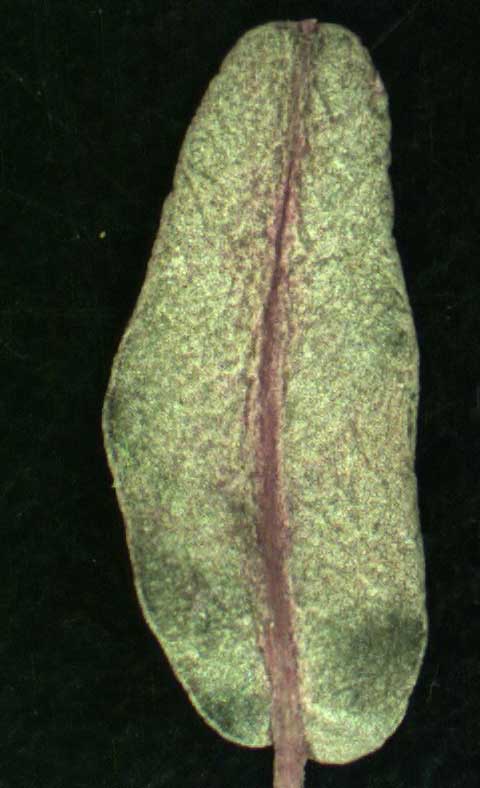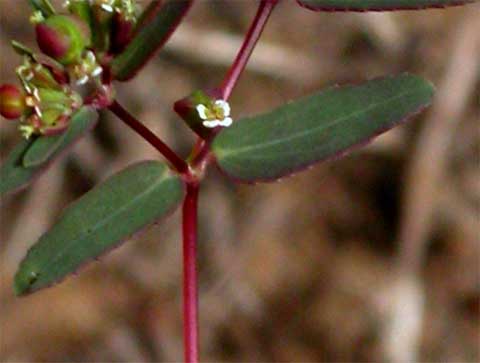

Habit [Top]

Stem [Top]

Abaxial leaf surface [Top]

Leaf margin [Top]

Flowers [Top]

Fruit [Top]

Fruit [Top]
G
G
G
G
?
G
?
?
G
G
G
F
G
Spurges (Chamaesyce spp., Euphorbiaceae) are summer annual weeds that flourish in warm weather, but in warmer climates some can persist into late fall. Plants flower in summer and early fall then die after frost. Flowers are greenish-white. Spurges are some of the most common warm-season weeds in container nurseries. Various species are important in different nurseries because of different weed introductions, production practices, and weed management strategies. Each exudes a milky sap when stems or leaves are broken.
Control Guidelines for Spurges: Because spurges flower when young and have little or no seed dormancy, weed populations can increase rapidly. Remove plants when young to reduce seed production. They are time consuming to hand weed due to the number of seedlings that form. Some species may forcefully discharge seeds. Spurges are well controlled by most preemergence nursery herbicides containing a dinitroaniline, but less well controlled by oxadiazon or oxyfluorfen.
Hyssop spurge (Chamaesyce hyssopifolia). Foliage of this species is similar to nodding spurge with an upright or ascending growth habit, and leaves are longer than wide with an uneven base and lack hairs. Plants have long, smooth, branched stems, often red in color, and a stout tap root. It is a prolific seeder; seeds have little or no dormancy and germinate quickly. It is somewhat more tolerant to herbicides than the other spurges. Occurrences of hyssop spurge in nursery crops appear to be increasing. [TOP]